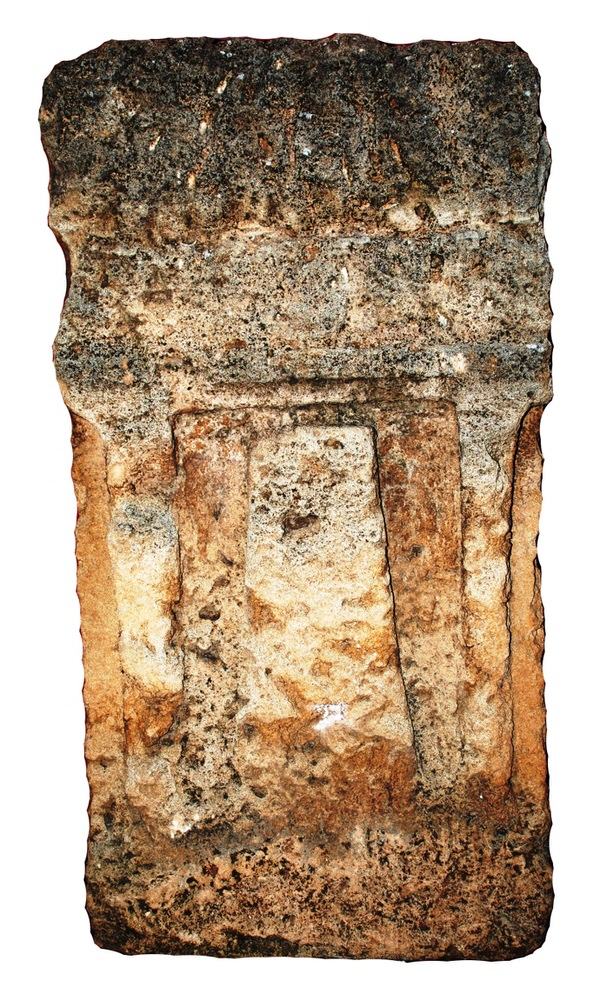Stelae with baetylus
The stelae at the Tharros tophet, of which there are more than three hundred, still intact and broken, offer a view of several representations, although they are a rough, elementary iconographic documentation.
Most of the representations on them are symbolic, including the baetylus, the sacred pillar and are considered to be the abode of divinities (figs. 1-3).



The main face of the stelae, known as the mirror, shows the outline of a small holy shrine with the crown decorated with Uraeus snakes, sacred cobras from Egyptian religion, in bas-relief. Inside the shine there is a baetylus idol, with a tapered upper part.
The stelae have a continuation of the temple concept on two sides, with two relief work pillars.
The Egyptian style crown places the stelae in Class II of the Tore classification (fig. 4).

Dating of the stelae is between the 5th and 4th century B.C.
Bibliografia
- S. MOSCATI, M.L.UBERTI, Scavi al tophet di Tharros. I monumenti lapidei, Roma 1985
- S. MOSCATI, Le officine di Tharros (Studia Punica 2), Roma 1987
- G. TORE, Le stele puniche del tophet di Tharros (Sardegna). Nota preliminare, in Annali dell’Istituto Orientale di Napoli, 35, 1975, pp. 127-132.

 VR
VR